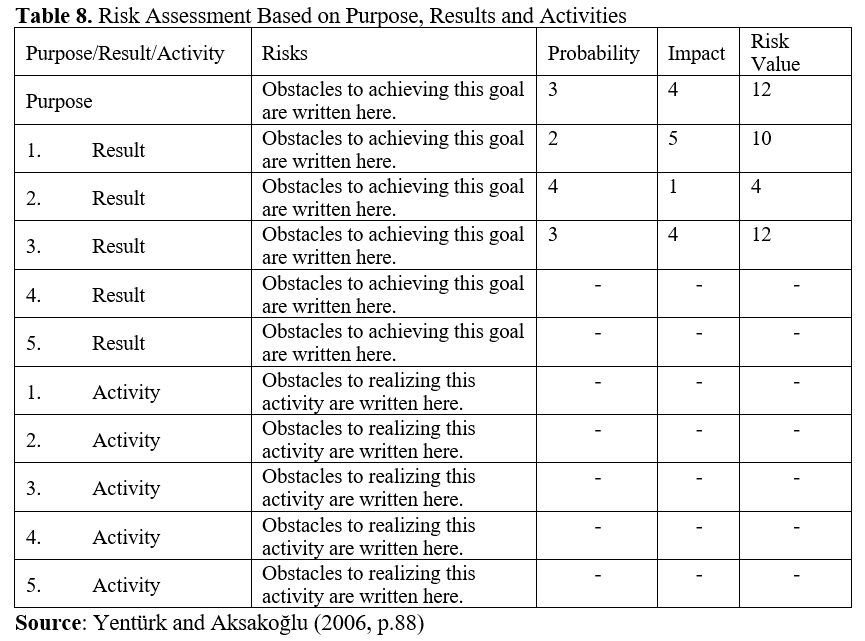Information

Summary: Focuses on the principles and techniques of risk analysis in project planning and management, highlighting the importance of identifying, assessing, and prioritizing risks to develop effective risk management strategies.
Learning Objectives:
It is possible to find solutions by rating your risks. Measures to eliminate, prevent, reduce and mitigate the effects of external threats to the project are carried out with a good risk analysis (Borghesi & Gaudenzi, 2012).
Personnel responsible for risk assessment may refer to the table below for each risk they have identified.

On the other hand, the identified risks can also be tabulated on the basis of purpose, result and activity according to probability, impact and risk value:

In the table above, it is possible to rank the risks on the basis of purpose, result and activity. In calculating the risk value, the product of probability and effect value is taken into account. Probability and effect values are set from 1 to 5. In this case, the minimum value that the risk value will take is 1, while the maximum value is 25. The determination of probability and impact values depends on the person or people who analyze the risk. Risk value ranges can be determined according to the project methodology.
For example, 1-5 can be defined as very low, 6-10 low, 11-15 moderate, 16-20 high, 21-25 very high. Different processes can be carried out according to the degree of risk. These risks can also be decomposed according to solution levels. In this framework, the risks that can be solved at the local level can be eliminated by the team of the partner in the relevant country, if there is an international risk, the relevant partners can minimize it with their own measures, or if a risk that will completely affect the project is detected, the fund provider can be contacted and request support and/or revision.
